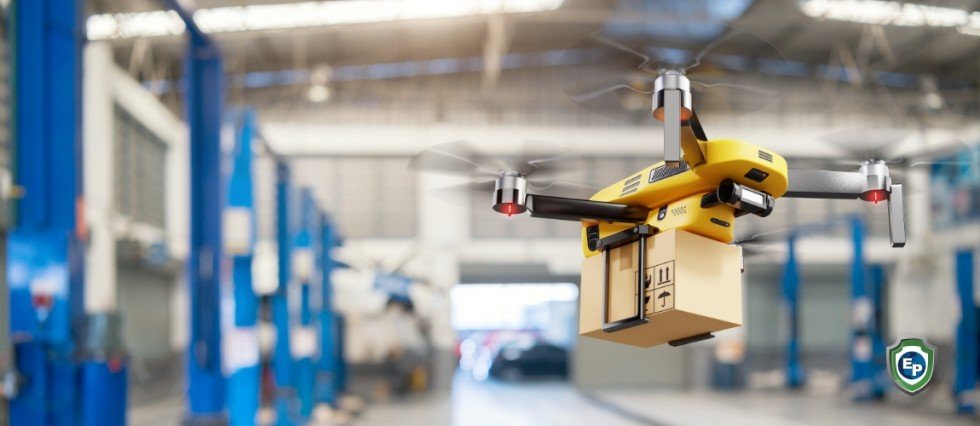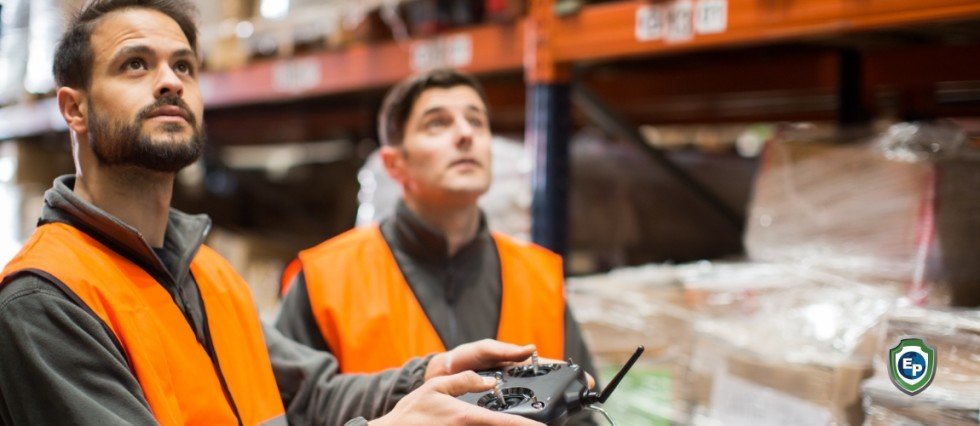Drones Fly in to Revolutionize the World of Warehouse Management
From delivering medicines and other essentials to imposing social distance standards, drones have become a must for many during the pandemic. Here's how drones are changing warehouse management.

There was never any doubt about the immense potential that drones hold. But it was during the peak of the Covid-19 pandemic that the world truly realized the high work efficiency of these small unmanned aerial vehicles. Drones have proven their true worth and commercial viability by delivering medicines and essentials to remote locations, screening inaccessible locations, remote policing, and imposing social distance standards.
Where Are Drones Used?
Telecom, defense, aerospace, power, oil and gas, construction, and agriculture among other sectors have successfully deployed drones to collect data, inspect sites, deliver goods, and more. Interestingly, drones have proved equally effective for indoor operations, especially in warehouses. Driven by machine learning techniques, drones have made inventory management in warehouses more proficient.
Where Do They Fit In Warehousing?
Automation in the warehousing and logistics chain is a growing market. A particularly exciting subset of this is the use of mobile robots and drones for the automation of movement-based tasks. This field encompasses all manners of mobile robotic devices used in logistics, which help goods in their journey from origin to destination. A report finds that the market for mobile robots (including drones) in logistics, delivery, and warehousing is likely to reach a staggering $83 billion and $334 billion in 2032 and 2042, respectively.

Why Are Drones Important?
Drones have become critical in inventory tracking in large warehouses for their cost-effectiveness and better time management. The reliance on drones in warehouses is growing by the day due to the need for constant monitoring of inventories at various shelf heights across large areas. The warehouse inventory management is in for a revolution as the scale of supply chains grows. Companies like MIT, Fraunhofer, FlytWare, Ware, Gather Aeriu, and Vimaan are involved in the big-time development of systems that use drones to keep track of products in warehouses. These companies are developing a drone-based computer vision platform for product tracking and management across the warehouse — including receiving, picking, storage, and pack-and-ship.
“The application of computer vision and AI models helps extract actionable and usable information. The holistic nature of data-based systems allow capture of not just barcodes, but also a multitude of inventory attributes, such as text or logo readability, bin location, storage space utilization, object dimensioning, counting and segregation — identifying inventory damage, detection of pilferage or leakage, and safety hazards in the warehouse such as damaged pylons or racks,” says SK Ganapathi, a former Lenovo GM and Qualcomm VP.
What Areas Can Drones Cover in Warehousing?
The deployment of drones has helped multiple warehouses spread over large areas and freed up personnel involved in the management of inventories to perform other vital functions. Development of intelligent automation softwares is going to further equip drones with technical capabilities to fly in a large fleet, but autonomously, and perform the assigned job accurately. The increasing velocity of the global supply chain due to the burgeoning e-commerce, tight labor market, and automation of operations will push more and more drones into the warehousing and logistics industry to provide stable and reliable management of inventories and overcome emerging challenges of stakeholders.
Visit Export Portal
For more updates and news on technology, make sure to check out Export Portal!


















Comments 2